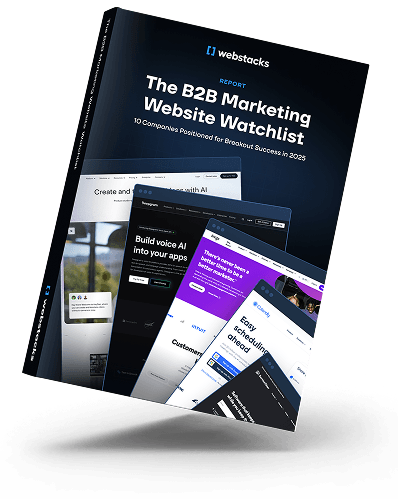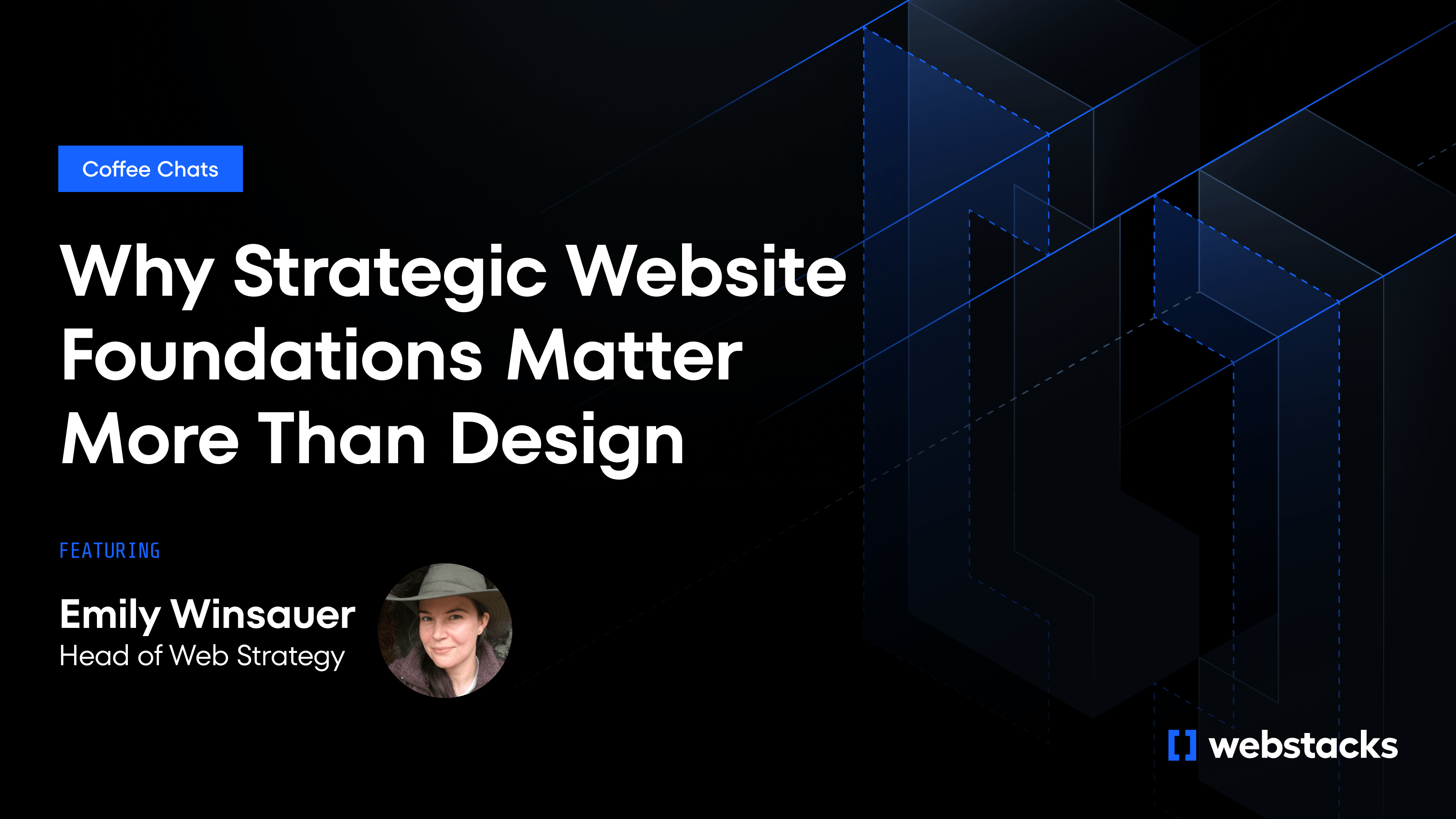Nowadays, B2B marketing campaigns are expected to move the pipeline, build trust, and prove value across every stage of the buyer journey.But here’s the catch: most teams are still stuck with slow tools, clunky workflows, and campaigns that can’t scale. If you’re waiting on dev tickets to launch a new campaign page, you’re likely already behind.
The best B2B marketing campaigns today are fast, focused, and dynamically cover the entire customer journey. They’re built on systems that let marketing teams move quickly without sacrificing strategy. They combine smart targeting, sharp storytelling, and websites that support growth, not block it.
This article breaks down nine campaigns that did it right. Each one has a clear goal, outcome, and a takeaway you can apply to your strategy.

What Makes a B2B Campaign Stand Out
Not every B2B campaign gets noticed, but the ones that do share a few key traits. The best campaigns do three things well:
- They match the buyer’s stage and intent.
- They scale across channels without losing clarity.
- They deliver content that helps, not just sells.
Behind the scenes, these campaigns are backed by dynamic and scalable systems. Think: modular content, flexible CMS setups, and fast handoffs between marketing, design, and dev. If your team can’t spin up a targeted landing page in a day, it’s time to fix that.
This is why Webstacks builds websites like products — not projects. We help B2B teams create modular systems that move as fast as their campaigns do.
9 of the Best B2B Marketing Campaigns
Some of the strongest B2B marketing campaigns dynamically interact with the market, personalizing content to generate demand. Each of these campaigns generated leads, shifted brand perception, sped up sales cycles, or opened up entirely new markets.
1. Slack: Turning Employees Into Advocates
Slack didn’t just rely on paid ads to grow. They built a movement from the inside out, encouraging employees and power users to share how they used the product. The result was authentic, high-trust storytelling that outperformed traditional brand messaging.
What made it work:
- Real people telling real stories.
- Social proof baked into every touchpoint.
- No fancy production, just genuine value.
Why it matters:
In B2B, trust is everything. And trust moves faster when it comes from peers, not polished campaigns. If you’re building advocacy, start by equipping your internal champions.
2. Mailchimp x VICE: “Second Act” Docuseries
Mailchimp partnered with VICE to create a short film series spotlighting founders who reinvented themselves mid-career. It didn’t push a product; it built a brand. The series ran across digital and social channels, driving massive engagement and long-tail awareness.
What made it work:
- Sharp positioning: brand as a creative partner, not just an email tool
- Cinematic content that didn’t feel like marketing
- Hosted on a central campaign hub with clear conversion paths
Why it matters:
Top-of-funnel doesn’t mean shallow. This campaign proves that storytelling still works in B2B, as long as it’s anchored in audience insight and long-term relevance.
3. Shopify Plus: Personalizing Enterprise ABM
Shopify Plus used intent signals and firmographic data to trigger highly targeted landing pages for its ABM efforts. Each page matched the visitor’s industry, role, and maturity level — right down to tailored product messaging and customer proof.
What made it work:
- Dynamic page generation based on real-time data
- Content personalization without manual lift
- ABM at scale without sacrificing relevance
Why it matters:
You can’t fake personalization in enterprise sales. Buyers expect content that speaks directly to their context. The only way to deliver it fast is with a CMS setup that supports modularity and rules-based delivery.
4. HubSpot: Free Tools That Feed the Funnel
HubSpot built an ecosystem of free tools like Website Grader and Email Signature Generator that deliver continuous inbound traffic. Each tool leads to content, demos, or product sign-ups on autopilot.
What made it work:
- Value-first approach that earns trust before the pitch
- Evergreen content that doesn’t need constant updates
- Clear conversion paths built into the UX
Why it matters:
If your campaign disappears when the ads stop, it wasn’t built to last. HubSpot’s tools show how you can create marketing assets that generate leads for years, not just clicks for a quarter.
5. Calendly: Product-Led Growth That Scales
Calendly’s marketing team leaned into a product-led strategy, but what really made it work was how the website supported it. Instead of long-winded sales pages, they created a frictionless path to try the product instantly, with clear messaging and modular sections tailored by audience.
What made it work:
- Built for speed: users could self-qualify and convert fast
- Modular site structure made updates easy as new use cases emerged
- PLG motion reinforced by performance-first UX
Why it matters:
The site didn’t slow anyone down — it made it easy for buyers to get what they needed and take the next step. That’s the goal of any good PLG campaign: remove friction, adapt fast, and let users move on their terms.
6. Adobe: Owning a Category with “Experience Business”
Adobe reframed its entire value proposition around customer experience. The “Experience Business” campaign included a content hub, research reports, and thought leadership that positioned Adobe as the go-to for enterprise CX transformation.
What made it work:
- Unified message across paid, content, and events
- Central campaign hub driving traffic and downloads
- Clear POV supported by data and stories from real customers
Why it matters:
Thought leadership focuses on publishing with intent. Adobe’s campaign proved that a strong narrative can reshape how your category sees you.
7. ServiceTitan: Case Studies That Convert
Instead of generic testimonials, ServiceTitan created a library of industry-specific resource pages designed to support sales conversations. Built with Webstacks, these modular pages were easy to update, reuse, and tailor for different personas, giving marketing and sales a shared resource that drove real pipeline impact.
What made it work:
- Content matched to verticals and ICP pain points
- Built as modular components for fast reuse
- Clear structure: challenge, solution, results
Why it matters:
Proof sells. But only if it’s specific. This campaign turned content into a sales tool, not just a content checkbox—and the CMS made scaling it easy.

8. Webflow: Launching with Your Community
Webflow launched with their users in mind. Every major rollout came with creator-driven content, tutorial series, and landing pages built to showcase how real people used the product. The result? Built-in momentum.
What made it work:
- Community-generated content as part of GTM
- Product launch pages tailored by use case
- Fast feedback loops between users and the product team
Why it matters:
Your users aren’t just your audience — they’re your distribution. Webflow made their community part of the campaign engine, and the results spoke for themselves.
9. Airtable: Content Hubs That Run Like Products
Airtable launched the “Run Your Business” campaign to show how different teams, such as marketing, operations, and product, could use their platform. Each persona had its own content hub with videos, templates, and solution pages. The campaign was built to scale, with modular layouts that worked across industries and roles.
What made it work:
- Segmented content paths based on use case
- Resource hubs tied directly to product adoption
- Reusable assets built into a structured content system
Why it matters:
You can’t build demand if people can’t see themselves in your product. Airtable’s campaign nailed relevance and made their value obvious without overexplaining.
What These Campaigns Teach Us
The best B2B campaigns don’t happen by accident. They’re built on top of systems that let marketing move fast, speak clearly, and prove impact. If there’s a common thread across these examples, it’s this: success happens when strategy and execution are tightly aligned.
Here’s what stood out:
- Clear goals, tight targeting: Every campaign had a specific purpose — whether it was moving upmarket, launching a new feature, or building brand equity.
- Fast execution, not just good ideas: The teams behind these campaigns weren’t slowed down by dev dependencies. They used modular content, flexible CMS setups, and smart workflows to ship quickly.
- Content designed to convert: From landing pages to case studies to video hubs, every asset had a job to do — and it was easy to find, share, and act on.
And behind all of that? Websites that worked like campaign engines. They weren’t static, but built to scale with the strategy.
That’s exactly what Webstacks helps B2B teams do: design and build digital systems that remove bottlenecks, speed up launches, and drive real outcomes.
Ready to Build a Campaign That Performs?
Great B2B campaigns aim to match strategy with execution, and build the infrastructure that lets you move fast without breaking things.
If your team has a strong message but keeps getting stuck on slow rollouts, clunky workflows, or campaign pages that take weeks to launch, it’s time to fix the system.
Start with:
- A flexible CMS that marketing can actually use
- Modular content you can repurpose across the funnel
- A site that supports campaign velocity
Webstacks helps B2B teams get all of that in one place, so your next campaign is both smart and scalable.Want your next B2B marketing campaign to hit harder and go live faster? Book a Webstacks demo to see how we can turn your website into a campaign engine.




